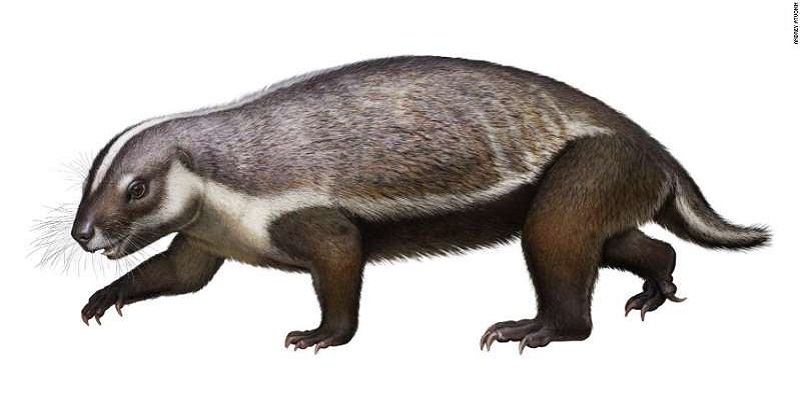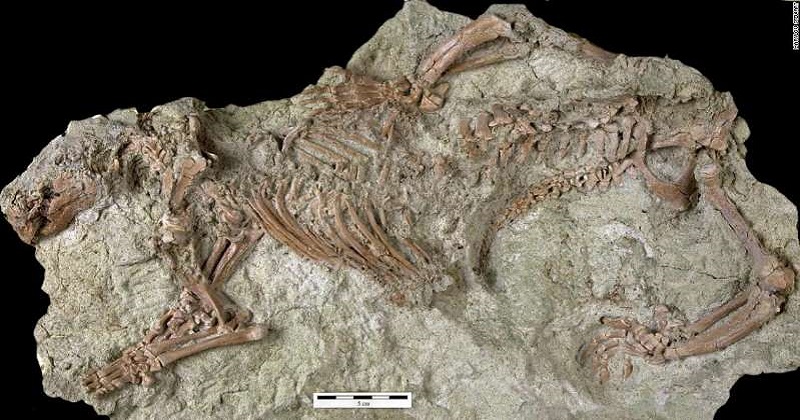
New research published today in the Journal of Vertebrate Paleontology describes a bizarre 66 million-year-old mammal that provides profound new insights into the evolutionary history of mammals from the southern supercontinent Gondwana – recognized today as Africa, South America, Australia, Antarctica, the Indian subcontinent, and the Arabian Peninsula.
David Krause, lead study author, senior curator of vertebrate paleontology at the Denver Museum of Nature & Science and professor emeritus at Stony Brook University, said, “Knowing what we know about the skeletal anatomy of all living and extinct mammals, it is difficult to imagine that a mammal like Adalatherium could have evolved; it bends and even breaks a lot of rules.”

Scientists think that the badger-like creature, known as Adalatherium hui, would have burrowed. It had a large collection of nerves in the snout, making this area extremely sensitive – a feature frequently seen in burrowing animals. Although the life-like reconstruction of Adalatherium is superficially similar to a run-of-the-mill badger, its “normality” is only skin deep. Below the surface, its skeleton is nothing short of outlandish.
Krause noted, “Adalatherium is just one piece, but an important piece, in a very large puzzle on early mammalian evolution in the southern hemisphere. Unfortunately, most of the pieces are still missing.”

Post Your Comments